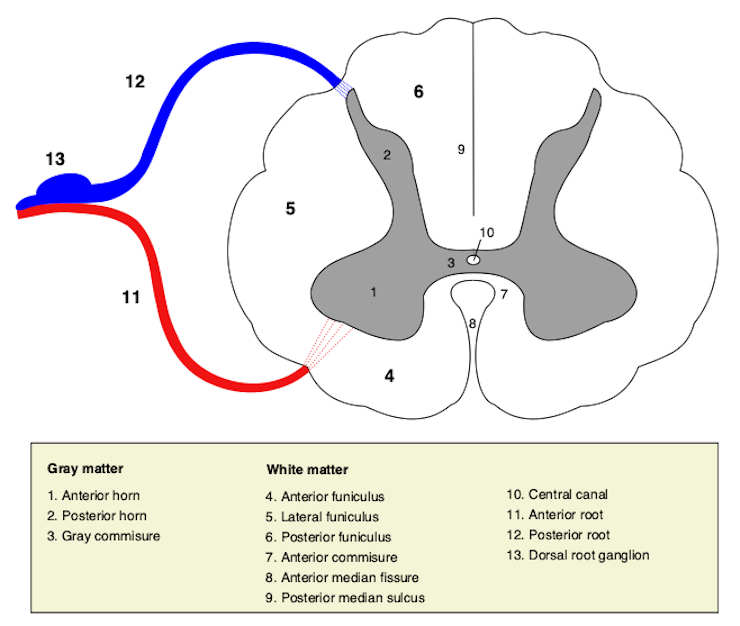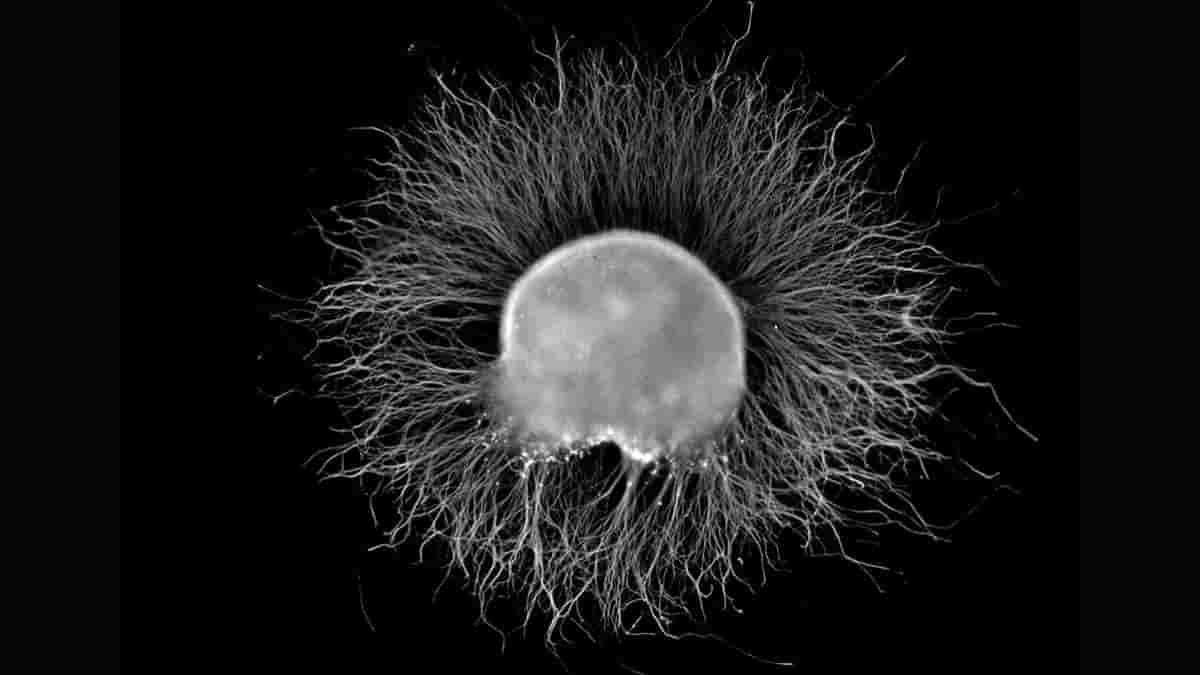A dorsal root ganglion, sometimes known as a posterior root ganglion or spinal ganglion, is a group of neurons (a ganglion) in a spinal nerve’s dorsal root. The dorsal spinal nerve root is one of two “roots” that arise from the spinal cord. The dorsal root ganglia contains the cell bodies of sensory neurons known as first-order neurons.
Dorsal root ganglion neurons’ axons are referred to as afferents. In the peripheral nervous system, afferents refer to the axons that relay sensory information into the central nervous system.
Dorsal Root Ganglia Function
Numerous sensory receptors found in the nerve ends of dorsal root ganglion neurons are triggered by painful, thermal, chemical, and mechanical stimuli. A set of ion channels in these sensory neurons has been found that are believed to be involved in somatosensory transduction.
Action potentials are fired when a mechanical stimulus compresses the dorsal root ganglion, lowering the voltage threshold required to elicit a response. This activation could even continue even after the stimulus is removed.

Credit: Polarlys CC-BY
It has been discovered that the posterior root ganglion neurons have two different kinds of mechanosensitive ion channels. Both of the channels can be generically categorized as low threshold (LT) or high threshold (HT). They differ in both their thresholds and sensitivity to pressure, as implied by their names.
These ion channels are cationic channels, and it seems that the cytoskeleton and proteins connected to it are responsible for controlling their activity. It is reasonable to assume that additional sensory neurons may also include these channels, given their existence in the posterior root ganglia.
There may be a role for high-threshold channels in nociceptive processes. These channels, which are typical of nociceptors, are mostly located in smaller sensory neurons in the dorsal root ganglion cells and are activated by higher pressures.
Furthermore, the threshold of HT channels was lowered in the presence of PGE2 (a compound that sensitizes neurons to mechanical stimuli and causes mechanical hyperalgesia), indicating that HT channels play a role in the transduction of mechanical stimuli into nociceptive neuronal signals.
Certain forms of GABAA receptors can mediate the presynaptic modulation of the dorsal nerve ending discharge in the spinal cord, but glycine receptors, which are absent from these types of terminals, cannot. Hence, nociceptive transmission and pain perception can be presynaptically regulated by GABAA receptors but not by glycine receptors.
Structure
Dorsal root ganglia are located in the intervertebral foramina. The anterior and posterior spinal nerve roots connect just beyond (lateral) the dorsal root ganglion.
The neurons in the dorsal root ganglion are pseudo-unipolar, which means they have a cell body (soma) with two branches that act as a single axon, known as a distal process and a proximal process.
Unlike the majority of neurons in the central nervous system, an action potential in a posterior root ganglion neuron may initiate in the periphery, bypass the cell body, and continue to propagate along the proximal process until it reaches the synaptic terminal in the posterior horn of the spinal cord.
The distal portion of the axon can either be a naked nerve ending or be covered in a structure that aids in the transmission of certain information to the neuron.
The nerve ending of the distal process is enclosed in two different examples: Meissner’s corpuscles, which increase the sensitivity of mechanosensory neurons to stroking alone, and Paccinian corpuscles, which increase the sensitivity of neurons to vibration.
References:
- Kandel ER, Schwartz JH, Jessell TM. Principles of Neural Science, 4th ed., McGraw-Hill, New York (2000). ISBN 0-8385-7701-6
- Lorenzo LE, Godin AG, Wang F, St-Louis M, Carbonetto S, Wiseman PW, Ribeiro-da-Silva A, De Koninck Y (June 2014). Gephyrin Clusters Are Absent from Small Diameter Primary Afferent Terminals Despite the Presence of GABAA Receptors. J. Neurosci. 34 (24): 8300–17. doi:10.1523/JNEUROSCI.0159-14.2014
- Purves, Dale; Augustine, George J.; Fitzpatrick, David; Katz, Lawrence C.; LaMantia, Anthony-Samuel; McNamara, James O.; Williams, S. Mark (2001). The Major Afferent Pathway for Mechanosensory Information: The Dorsal Column-Medial Lemniscus System. Neuroscience. 2nd edition, Sinauer Associates ISBN: 978-0878937424
- Sugawara, O.; Atsuta, Y.; Iwahara, T.; Muramoto, T.; Watakabe, M.; Takemitsu, Y. (1996). The effects of mechanical compression and hypoxia on nerve root and dorsal root ganglia. An analysis of ectopic firing using an in vitro model. Spine. 21 (18): 2089–2094. doi:10.1097/00007632-199609150-00006
Image: A dorsal root ganglion from a chicken embryo (around stage of day 7) after incubation overnight in NGF growth medium. Credit: Wikimedia CC-BY
